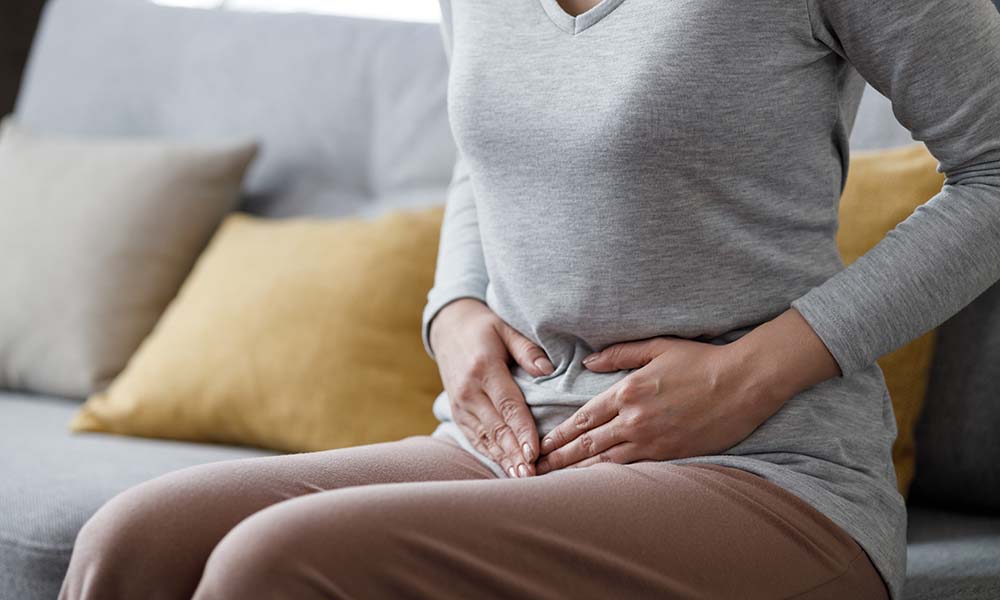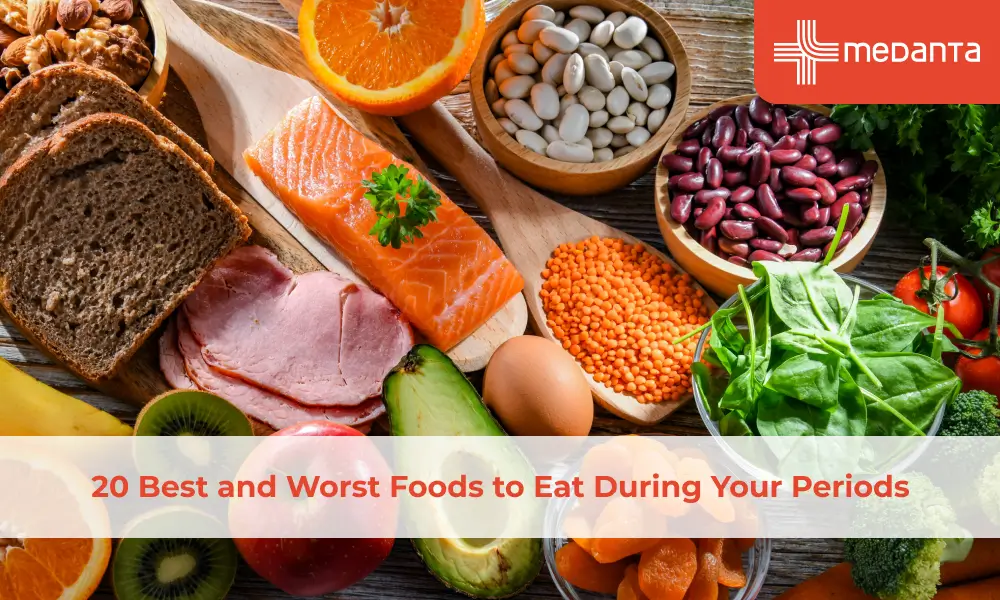Are Blood Clots During Periods Normal? Causes & When to Worry

One-third of menstruating people experience flows heavy enough to soak through their menstrual products every hour. This common occurrence often raises the question: are blood clots normal during a period? Generally, passing small blood clots in period normal is normal, mainly when they are no larger than a quarter in size.
Blood clots typically appear during the first two days of menstruation when the flow is heaviest. However, while some clotting is expected, knowing when it might signal an underlying condition is essential for maintaining good health.
This guide explains everything about period blood clots, the causes of clots in menstruation, and when they might require medical attention.
What Are Period Blood Clots?
The formation of period blood clots follows a specific biological process. As the uterine lining sheds, small blood vessels begin to bleed. The body then releases proteins that cause the blood to coagulate, preventing excessive blood loss. Additionally, when menstrual blood pools in the uterus or vagina before leaving the body, it begins to form these characteristic clots. Period blood clots share these common characteristics:
Size: Menstrual blood clots can vary in size, typically ranging from small (pea-sized) to larger (quarter-sized or more). Clots larger than a quarter may indicate heavy bleeding and should be evaluated by a doctor.
Appearance: Menstrual blood clots are gel-like masses composed of blood cells, tissue from the uterus lining, and specific proteins. These clots form part of the body's natural process to regulate menstrual flow.
Colour: The colour of period blood clots varies throughout the menstrual cycle. These clots often appear bright red at the start of menstruation, specifically when the blood flow quickly moves through the body. Meanwhile, darker red or maroon-coloured clots commonly occur during the heaviest flow days.
Frequency: Period blood clots form more frequently during heavy flow days
The cervix must dilate to allow these clots to pass, which explains why some people might notice them more when standing up after sitting or lying down for a while. Essentially, these clots serve as the body's natural defence mechanism, helping to control menstrual flow and prevent excessive bleeding.
Are Clots Normal with Periods?
Blood clots commonly appear during menstruation, and their presence rarely signals a health concern. Most women who menstruate will experience these clots at some point in their lives.
The size of blood clots plays a crucial role in determining their normalcy. Small clots, no larger than a quarter, are considered perfectly normal. These clots primarily occur at the beginning of menstruation, especially during the heaviest days of flow.
The colour of normal period clots varies throughout the cycle:
Bright red clots appear at the start of menstruation
Dark red or maroon clots occur during heavy flow days
Darker shades might be visible when the flow is slower
Naturally, blood clots form whenever menstrual blood collects inside the uterus. As this blood sits momentarily, it begins to coagulate, creating small clumps that pass spontaneously or during bathroom visits.
The body's anticoagulant system typically breaks down these blood collections. However, clots form more readily when the blood flow outpaces the body's ability to produce these natural thinning agents. This process occurs most frequently during the initial days of menstruation, which ordinarily represents the heaviest part of the cycle.
Period Blood Clots Reason: Why Do They Happen?
Several medical conditions and factors contribute to the formation of period blood clots. The body's ability to produce anticoagulants plays a key role in clot formation. Subsequently, if blood flow surpasses the body's capacity to create these natural thinning agents, clots begin to form. The following are some common cause of period clots:
Medical Conditions: Certain systemic conditions that affect the uterus lead to clot formation. Conditions that enlarge or put pressure on the uterine wall increase menstrual bleeding and clotting. These include:
Fibroids - muscular tumours growing in the uterine wall
Endometriosis - uterine-like cells growing outside the uterus
Adenomyosis - uterine lining growing into the uterine wall
Polyps - growths on the cervix or uterine lining
Hormonal Factors: Thyroid conditions, whether producing too much or too little hormone, can affect menstrual flow severity.
Medications: Certain medicines, including anti-inflammatory drugs and anticoagulants, contribute to abnormal menstrual flow.
Birth Control Methods: Contraceptive methods can affect clotting patterns. Non-hormonal IUDs might cause heavier periods with increased clotting in some cases. Consequently, changes in birth control methods might lead to temporary changes in menstrual flow and clotting patterns.
Blood Disorders: Von Willebrand disease affects the blood's ability to clot properly, potentially leading to heavy menstrual bleeding.
Recognising when period blood clots signal a potential health concern helps maintain menstrual wellness.
When Should You Be Concerned About Period Blood Clots or When to Seek Medical Advice?

Although small clots are normal, certain signs warrant medical attention. Medical attention becomes necessary if:
Blood clots larger than a quarter
Passing large clots multiple times per day
Soaking through menstrual products every hour for several consecutive hours
Needing multiple pads simultaneously to prevent leakage
Changing pads during the night
Periods lasting beyond seven days
Medical attention becomes also necessary if these symptoms occur alongside significant pain or appear between periods. Notably, pregnant individuals experiencing blood clots should seek immediate emergency care, as this might indicate pregnancy complications.
Conclusion
Period blood clots remain a natural part of menstruation for many people. Small clots, especially during heavy flow days, should not cause alarm. However, understanding the difference between normal and concerning clot patterns helps maintain good menstrual health.
Doctors agree that clots larger than a quarter size deserve attention, particularly when accompanied by excessive bleeding or severe pain. People experiencing these symptoms should track their menstrual patterns and consult doctors for proper evaluation.
The body's natural clotting mechanism works effectively most of the time. Still, certain medical conditions like fibroids, endometriosis, or hormonal imbalances might cause unusual clotting patterns. Regular check-ups and open communication with doctors ensure early detection of potential issues.
Remember, each person's menstrual experience differs. Paying attention to personal patterns and changes helps identify potential problems early. This awareness, combined with professional medical guidance when needed, supports overall menstrual wellness and health.
FAQs
How much clotting is considered normal?
Small clots, no larger than a quarter in size, are typically normal during menstruation. These clots primarily appear during the first two days of the cycle when the flow is heaviest.
What treatments are available for heavy clotting?
Doctors might recommend various treatment options based on the underlying cause:
Birth control methods to regulate the flow
Non-steroidal anti-inflammatory drugs (NSAIDs) for pain relief
Tranexamic acid for blood clotting control
Hormonal therapy
Surgical interventions in specific cases
What information should I share with my doctor?
When discussing period clots with doctors, prepare to share details about:
Period duration and flow intensity
Any bleeding between periods
Changes in menstrual patterns
Presence of pain
Current medications
Other medical conditions
How can I manage heavy periods at home?
Several strategies help manage heavy periods. Using high-absorbency products, wearing dark clothing, and keeping spare menstrual supplies nearby prove beneficial. As such, maintaining proper hydration and consuming iron-rich foods helps prevent anaemia.
What symptoms indicate anaemia from heavy periods?
Iron-deficiency anaemia symptoms include fatigue, weakness, paleness, shortness of breath, and chest pains. Hence, individuals experiencing these symptoms alongside heavy clotting should seek medical evaluation.






